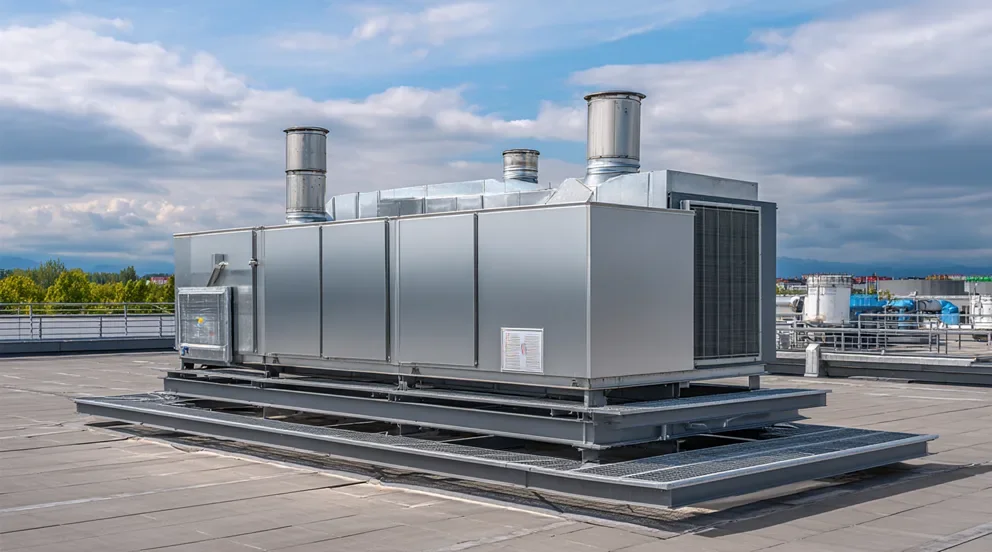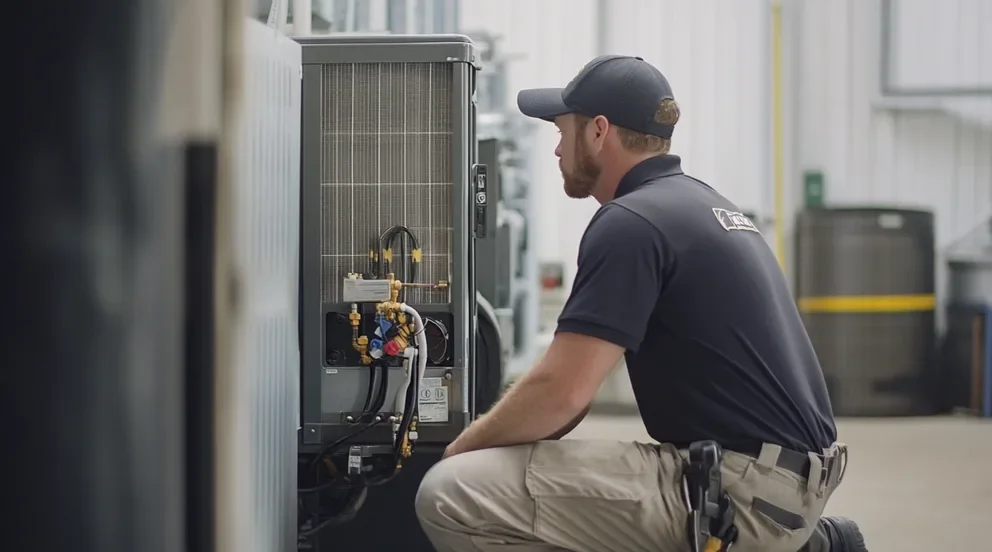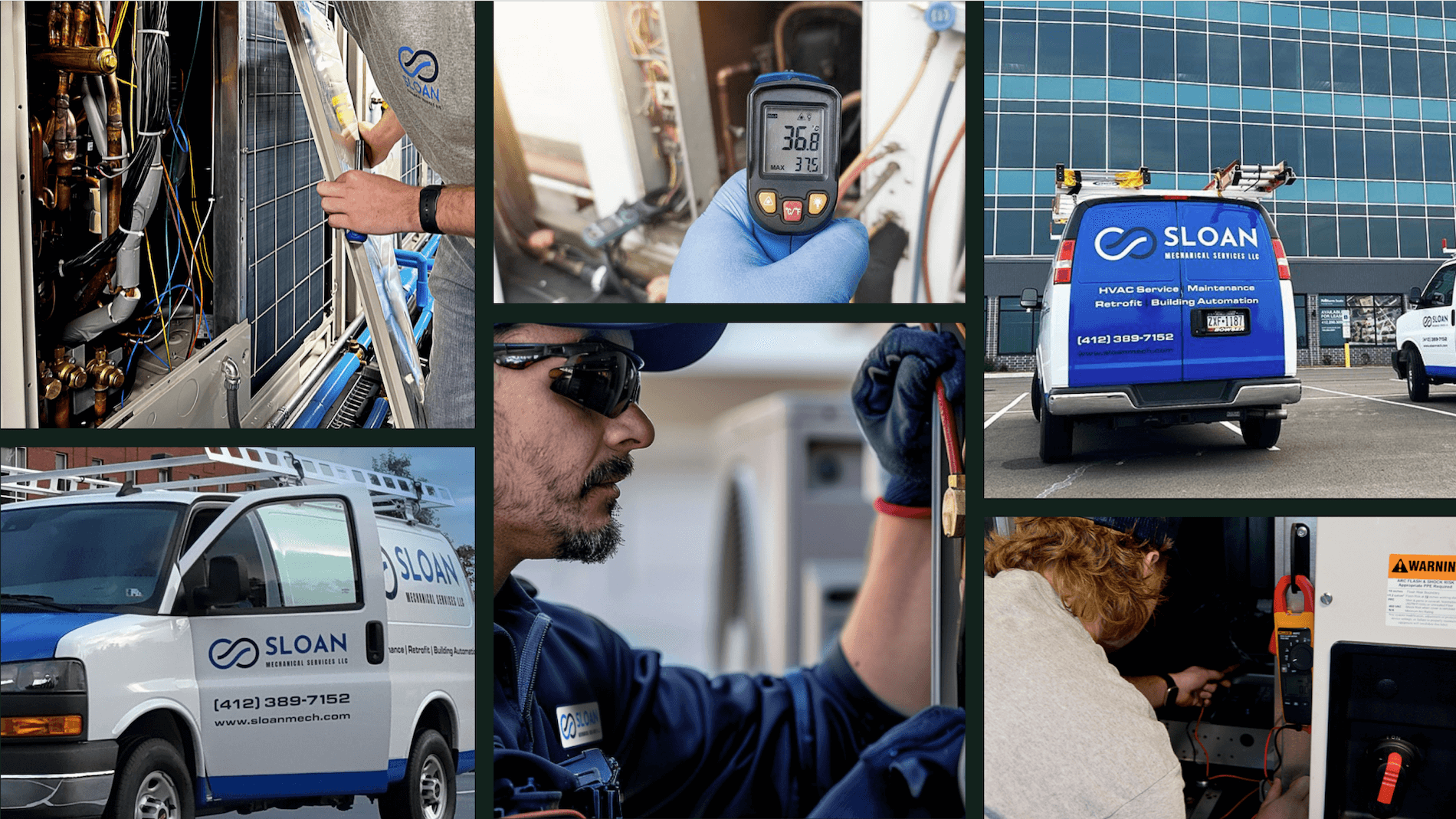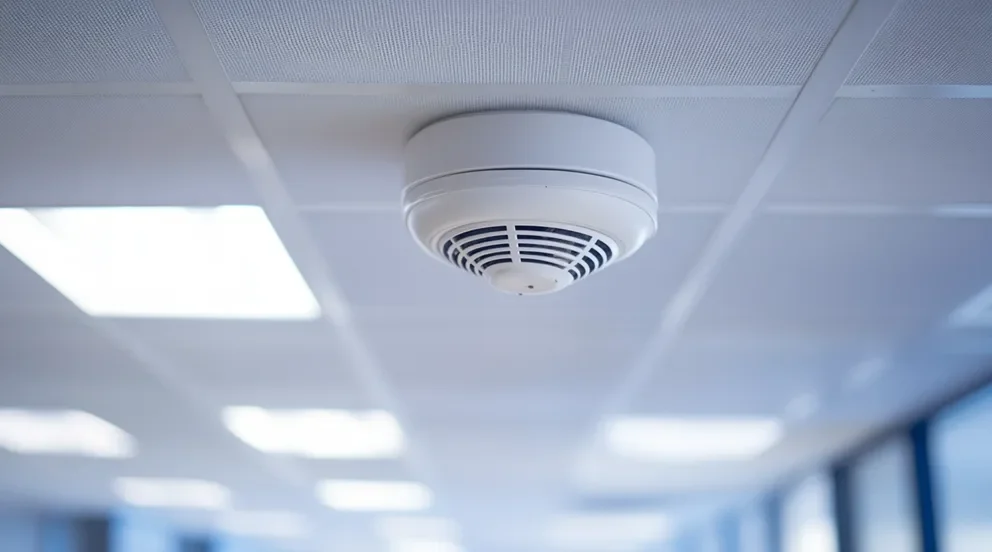Most field technicians in the U.S. are already using iPads or iPhones on the job. Whether it's pulling up service histories, clocking in, or checking dispatch updates, Apple devices have become a standard tool across many field service professionals. That makes it essential to find HVAC software for iPad and iPhone that works well in real-world conditions—fast load times, offline access, and simple navigation in the field.
This guide cuts through the noise and focuses on the HVAC apps for iPad and iPhone that actually support the way your team works. For contractors in the HVAC industry, this breakdown will help you pick tools that improve response times, reduce errors, and keep your team moving.
- Choosing the right HVAC app for iPad & iPhone
- Why iPad & iPhone compatibility is so important for HVAC apps
- 6 key features to look for in an HVAC app for iPad & iPhone
- 8 best HVAC apps for iPad & iPhone
- 7 benefits of using an HVAC app compatible with iPads & iPhones
- 3 important FAQs about HVAC apps for iPad & iPhone
Choosing the best HVAC app for iPad and iPhone starts with a clear look at how your crew works in the field. This next section walks through the key questions to ask and decisions to make before locking in your app.
Choosing the right HVAC app for iPad & iPhone
Many HVAC companies now rely on iPads and iPhones to manage daily operations. But just because an app works on iOS does not mean it performs well in the field. Some miss key functions, while others fail under jobsite conditions. If your team runs on Apple devices, choosing an HVAC app for iPad or iPhone depends on how well the tool fits the real tasks your crew handles daily. The questions below will help you assess if an app actually supports the work being done in the field.
- Device usability – Is the app designed specifically for iOS, or just adapted from desktop? Does it adjust well to both iPad and iPhone screens? Can techs navigate it easily while wearing gloves or in bright sunlight?
- Job workflow compatibility – Does it let techs access service history, update job status, and attach photos or notes directly from the field? Can it handle tasks without a Wi-Fi connection?
- User training & onboarding – How long will it take to train techs on the system? Does the app offer simple walkthroughs or tutorials? Will new hires be able to pick it up quickly without calling the office every hour?
- Support & updates – Does the platform have responsive support if something breaks mid-job? How often does the app receive updates to stay compatible with new iOS versions?
- Features – Can techs create invoices, check parts inventory, and schedule follow-ups from the app? Does it support push notifications, offline sync, and photo or signature capture?
Next, we will look at why iPad and iPhone compatibility is more than convenience—it is essential to field performance and daily reliability.
Why iPad & iPhone compatibility is so important for HVAC apps
iOS devices like iPads and iPhones offer a stable, unified ecosystem that fits well with how HVAC teams operate—both in the office and out in the field. Technicians need tools that launch quickly, sync in real time, and handle offline conditions. Office staff need to coordinate schedules, review job updates, and track technician locations without lag or data loss. With Apple’s controlled hardware and software environment, HVAC apps built for iPad and iPhone tend to be faster, more secure, and more reliable across all job conditions.
Another major advantage is how well Apple devices work together. A tech might start a quote on their iPhone in the field and finish it on an iPad back at the truck or in the office. Files, photos, and notes transfer instantly through iCloud or AirDrop, reducing the need for manual uploads or workarounds. This seamless integration saves time and cuts out friction during urgent service calls, making iOS devices especially useful for the fast-moving pace of HVAC work.
For companies trying to keep field crews and office staff aligned, iOS compatibility is not a luxury—it is essential. Without apps built to run smoothly across iPhones and iPads, teams risk delays, data gaps, and missed opportunities to bill or upsell accurately.
6 key features to look for in an HVAC app for iPad & iPhone
The best HVAC apps for iPad and iPhone go far beyond job tracking. For techs in the field, speed matters. So does being able to access info without returning to the truck—or the office. When an HVAC app fits the way your team already works, it removes friction, cuts errors, and helps crews finish jobs faster.
Take this example: A tech finishes a repair on-site and needs to update the work order, capture a photo, and get a customer signature—all without losing service. With the right HVAC software for iPad, that entire workflow happens in one place. No app switching. No follow-up emails. Just done. Here are six core features that support real field service conditions.
1. Smart scheduling
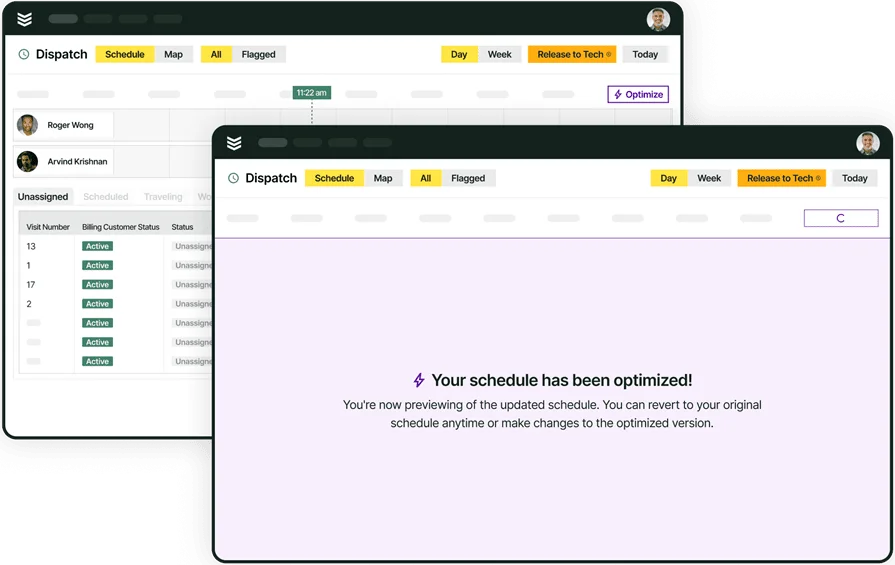
A scheduling tool that runs clean on iOS is essential. It tells techs where to be, when to be there, and what the job requires. The best HVAC apps for iPad and iPhone show assignments clearly, adjust in real time, and update techs instantly.
Let’s say a technician just wrapped up a service call and gets reassigned to a high-priority job across town. Without an efficient HVAC scheduling software, that handoff might fall through. On iOS, the update pushes instantly, and the tech has everything they need—from the service history to the gate code—right in their hand.
2. Real-time dispatching
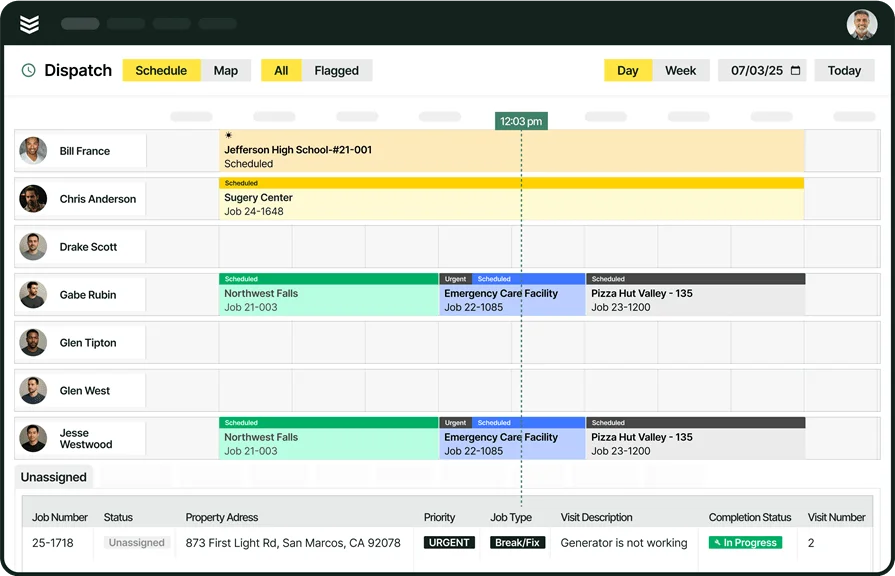
Dispatching needs to be responsive, not reactive. Field teams using iPads or iPhones rely on immediate updates. A solid HVAC app for iPad connects dispatchers to techs live—no delays, no missing info.
During a heatwave, a call comes in for an emergency AC outage at a commercial building. Office staff reroute the nearest tech on the fly. With integrated dispatch software, the job pops up on the tech’s iPhone, complete with location, notes, and customer instructions—no calls or confusion needed.
3. Mobile CRM access
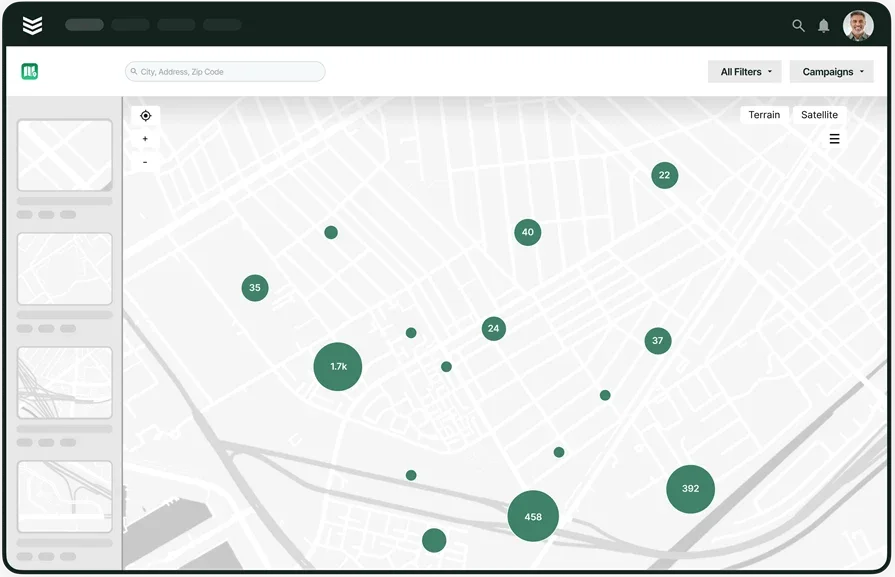
Your techs are the face of the business. They need more than a name and address—they need full context. HVAC apps for iPhone that include CRM tools let techs access contact info, asset histories, and communication logs from anywhere.
For example, a technician heading to a recurring maintenance call pulls up the building’s system specs, past issues, and site notes—all from their iPad. With a mobile-friendly CRM system for contractors, they avoid asking the same questions again, fix the issue faster, and leave the customer more confident in the work.
4. On-the-spot quoting
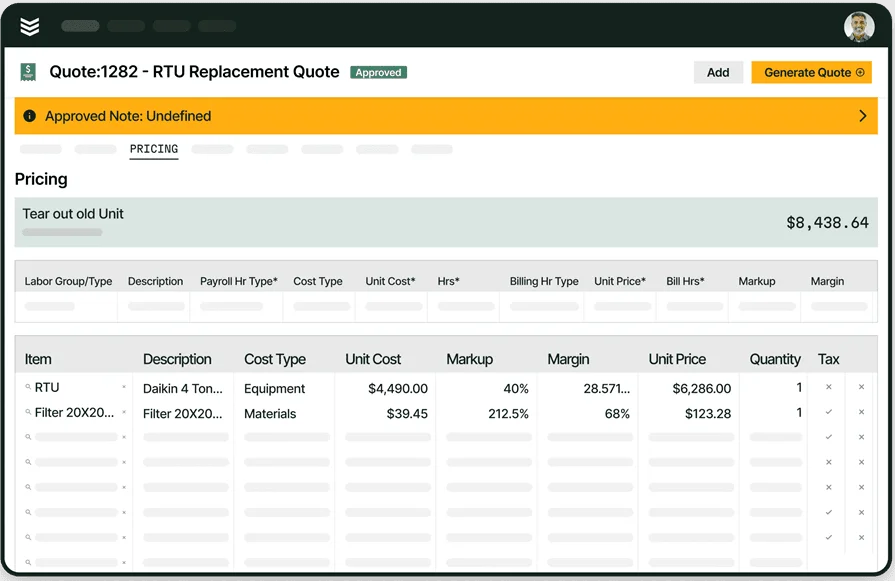
Quoting delays cost business. iOS-ready quoting tools let your techs build and send proposals on-site, using actual parts, labor, and service data.
A tech finds a failed compressor while on a routine maintenance call. Rather than call the office or wait until they’re back at their desk, they generate a professional quote right from their iPad. Using quoting software, they send it to the customer within minutes—boosting the odds of immediate approval.
5. Fleet visibility
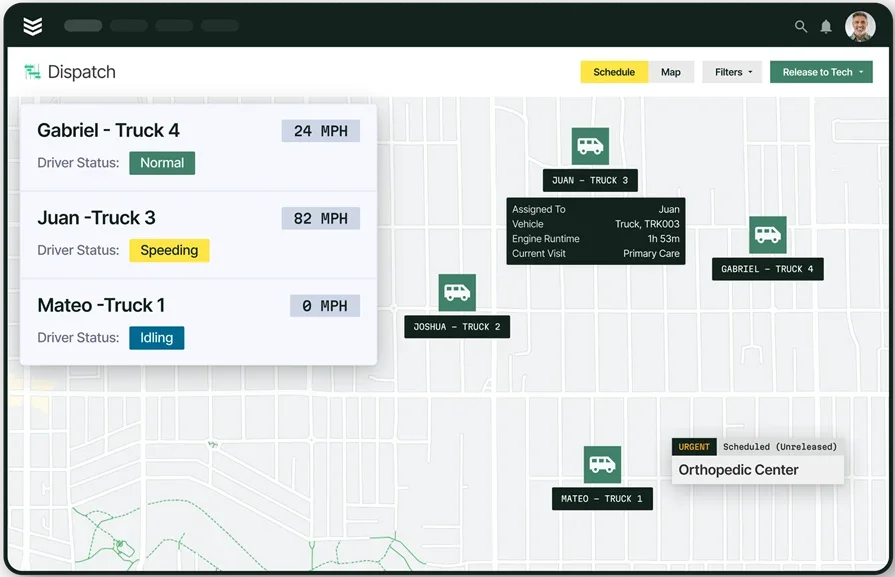
Knowing where your vehicles and techs are in real time helps avoid double bookings, wasted gas, and scheduling mix-ups. HVAC software for iPad with fleet tracking gives dispatchers live updates—and helps techs avoid unnecessary detours.
Say a dispatcher needs to redirect a tech who’s finishing a nearby job. With fleet tracking tools, they can view locations live, check who’s closest, and assign the job without delay. The update hits the tech’s iPhone instantly, and the truck stays rolling.
6. Fast invoicing & payment
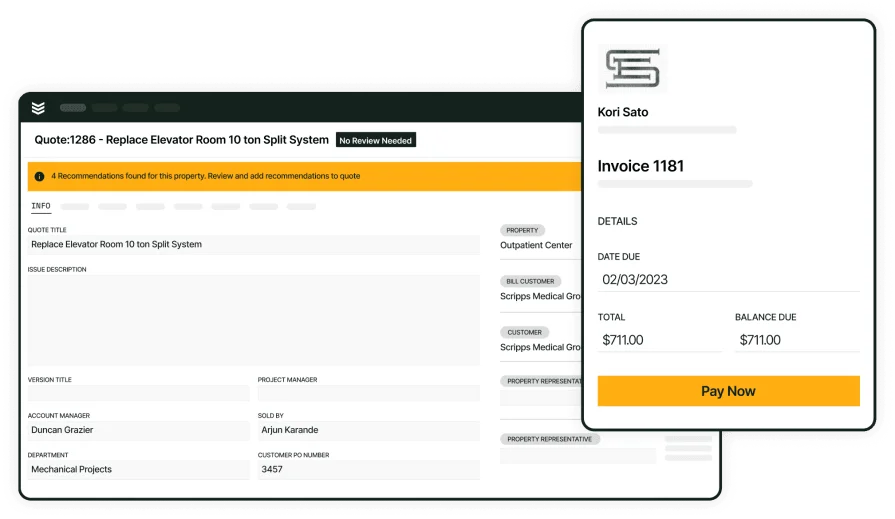
Nobody likes chasing invoices. When techs can generate and send invoices directly from their iPads, payment cycles get shorter. Even better if the customer can pay right then and there.
Picture this: A field tech finishes a service job, generates an invoice, and hands the iPad to the customer to pay via card on the spot. That’s what HVAC contractors get with invoicing and payment tools. It reduces billing lag and eliminates paperwork for everyone.
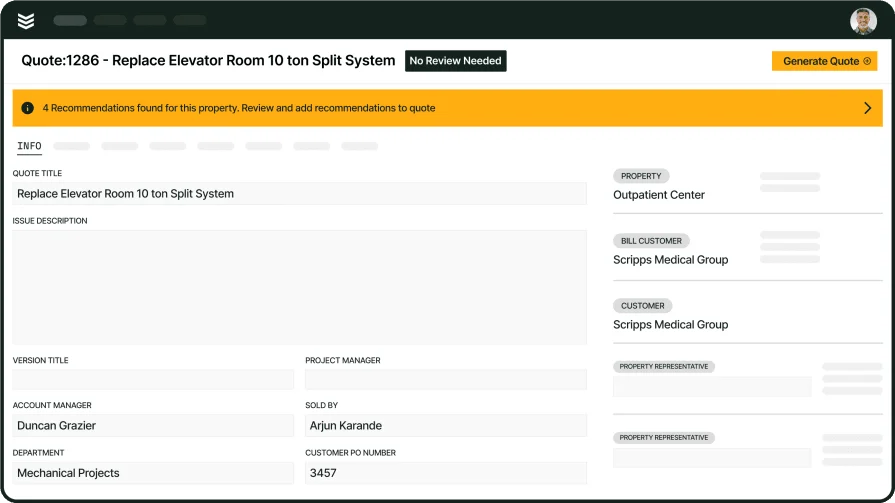
Try our HVAC platform
We connect HVAC techs in the field with the details they need to finish the job.
Other features to look for in HVAC software for iPad & iPhone
Beyond scheduling, dispatching, quoting, and invoicing, there are additional features that help HVAC teams stay sharp and coordinated—especially when working across iPads and iPhones. These tools are not always critical for day-to-day jobs, but they offer long-term value, helping businesses improve technician accountability, monitor performance, and keep customer relationships on track. Below are some of the add-ons worth looking for in HVAC apps for iPad and iPhone.
- Time tracking – Accurately tracking technician hours is vital for payroll, job costing, and operational visibility. iOS-ready time tracking software allows techs to clock in and out from their iPhone or iPad, link time entries to specific jobs, and submit logs without returning to the office.
- Service agreements – Managing preventive maintenance contracts in one place reduces missed visits and expired terms. Service agreement tools built into your HVAC app help automate renewals, track upcoming services, and store agreement terms in a format techs can reference on-site.
- Reporting & analytics – Having the ability to generate reports from your iPad or iPhone gives business owners visibility without being tied to a desktop. Reporting software allows you to analyze job completion rates, revenue per tech, and time spent per call—all from a mobile device.
- Sales pipeline tracking – While not used by field techs daily, sales tracking features are helpful for business owners who want to manage opportunities on the go. With a sales pipeline tool, you can monitor lead progress, track conversions, and plan follow-ups directly from your iPhone.
These added features might not be the first thing a field tech looks for, but they round out a strong mobile toolset. For HVAC companies using iPads and iPhones, having these capabilities built into one app means fewer moving parts, less confusion, and better long-term results. Now let’s look at the HVAC apps for iPad and iPhone that deliver across the board—starting with the top options in the industry.
8 best HVAC apps for iPad & iPhone
There are hundreds of HVAC apps out there, but not all of them perform well on iOS. The best HVAC apps for iPad and iPhone support both office coordination and field execution—without crashing, lagging, or cutting corners. These eight tools stand out for their usability, iOS performance, and how well they handle the real demands of HVAC work.
1. Best for commercial: BuildOps
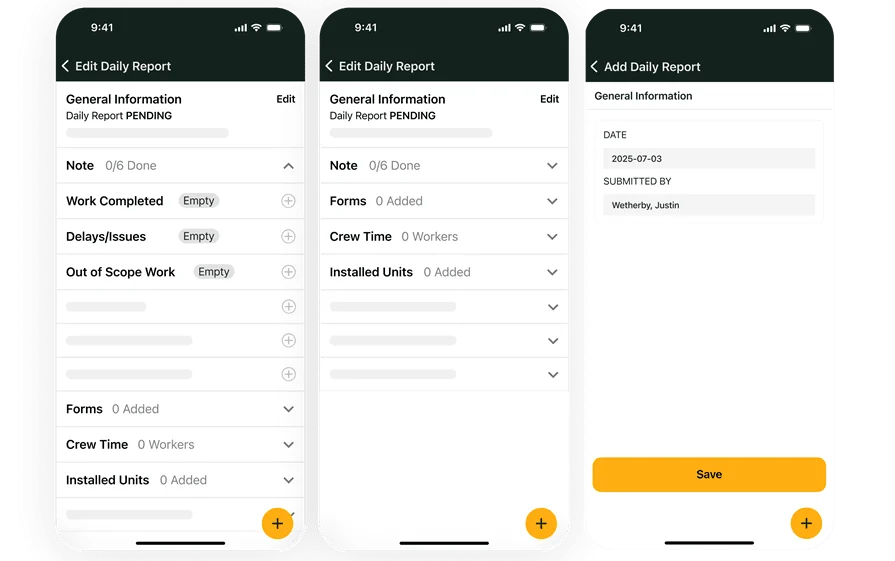
BuildOps is a mobile-first HVAC platform designed specifically for commercial contractors. It offers real-time dispatching, asset tracking, offline capabilities, and full access to job info from iPads and iPhones. The app handles heavy-duty workflows with ease and keeps techs moving without gaps in communication or functionality.
How pricing works: BuildOps provides custom pricing based on company size and scope—no one-size-fits-all plan.
What sets it apart for commercial: The app supports complex client structures, large technician teams, and integrates tightly with field tools and back-office workflows. It is built to handle everything from job checklists to customer hierarchies, all from one iOS app.
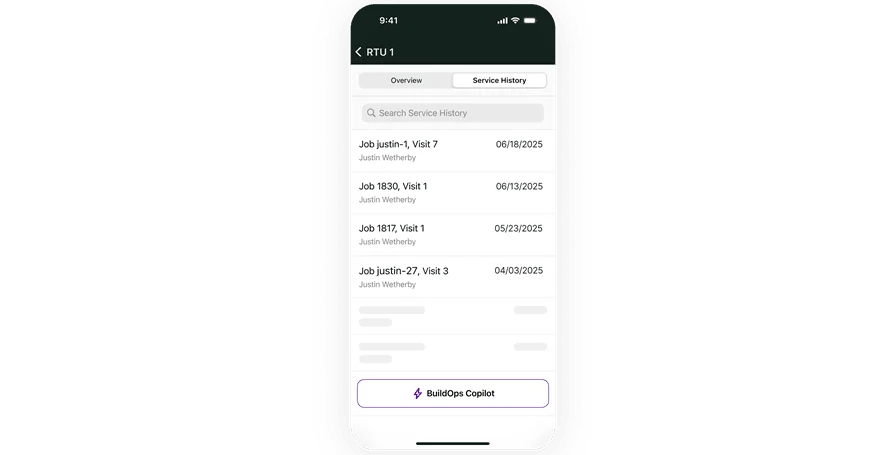
See BuildOps in action
Our HVAC app gives field techs all the tools they need in the palm of their hands.
2. Best for residential: Housecall Pro
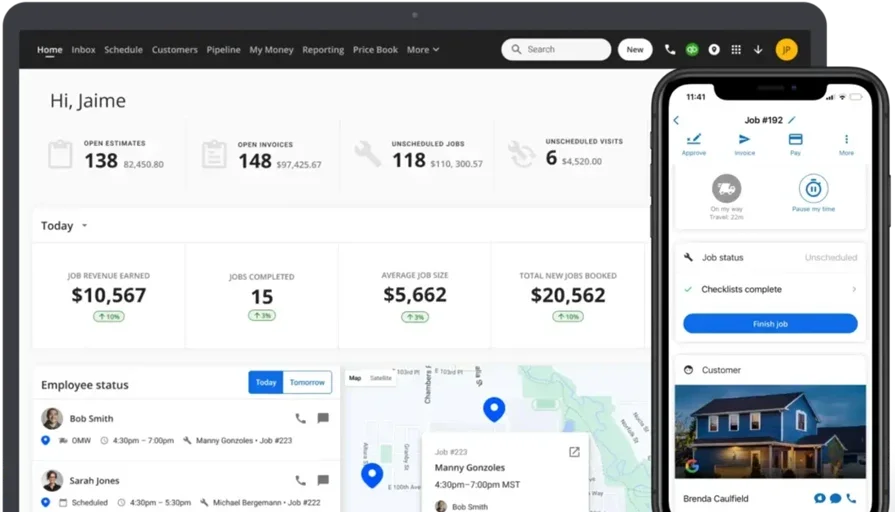
Image Source: Housecall Pro
Housecall Pro is known for its clean interface and ease of use, making it ideal for smaller HVAC businesses focused on residential service. It includes scheduling, invoicing, payment collection, and light CRM features—all in an iOS-compatible package. However, the app may not scale well for larger teams or contractors with multiple service lines.
How pricing works: Starts around $59/month with tiered plans that unlock more features as you go.
What sets it apart for residential: Its simplicity, built-in payment processing, and customer texting tools help small residential HVAC shops stay organized without overcomplicating operations.
3. Best for general: Jobber
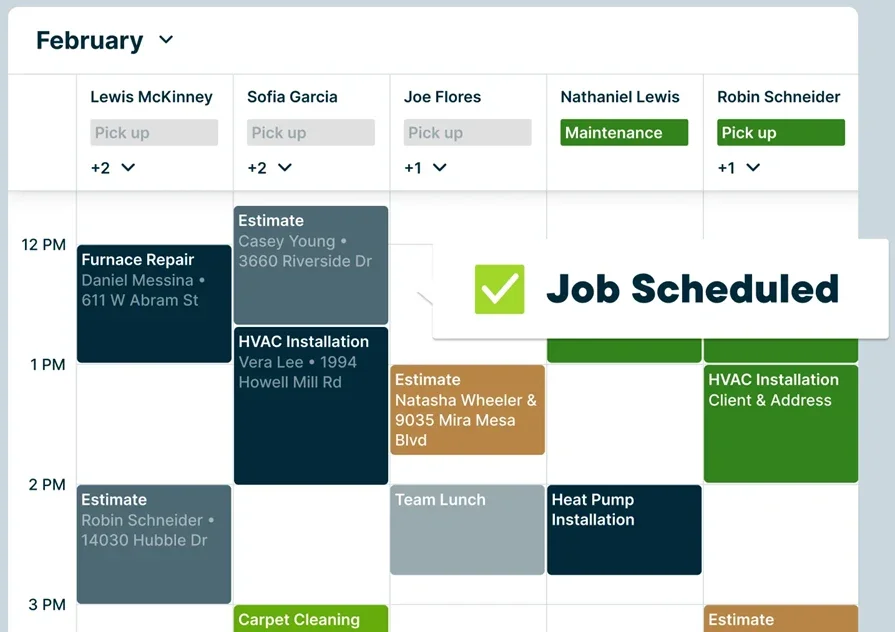
Image Source: Jobber
Jobber offers a flexible platform for general HVAC work across both residential and light commercial. From job scheduling to invoicing and customer management, it provides an end-to-end system that runs smoothly on iPads and iPhones. That said, it may lack some of the depth and customization needed by larger service firms.
How pricing works: Plans begin at $25/month for one user, with more advanced features available in higher tiers.
What sets it apart for general: It’s built for businesses that need an all-in-one solution without heavy setup or training, making it a good fit for techs who want to hit the ground running on iOS.
4. Best for small to mid-sized businesses: FieldEdge
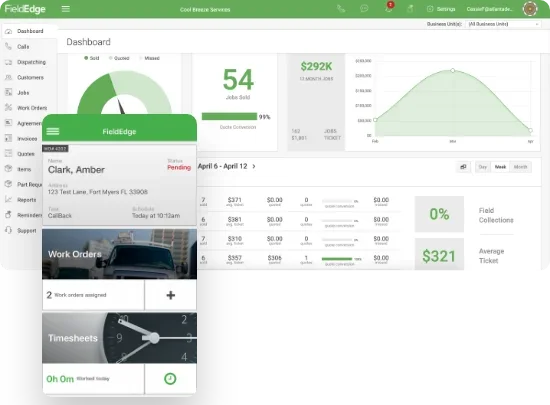
Image Source: FieldEdge
FieldEdge offers a strong balance of office management and mobile usability for HVAC companies with growing teams. The iPad and iPhone app includes dispatching, service history, maintenance agreement tracking, and invoicing. While powerful, the interface may feel dated compared to newer tools and could require more training for teams unfamiliar with legacy-style software.
How pricing works: Quote-based, with setup and training costs typically included.
What sets it apart for small to mid-sized businesses: It helps manage service agreements, generate quotes, and track job histories all from the field—without needing to call the office for updates.
5. Best for independent contractors: Bluon
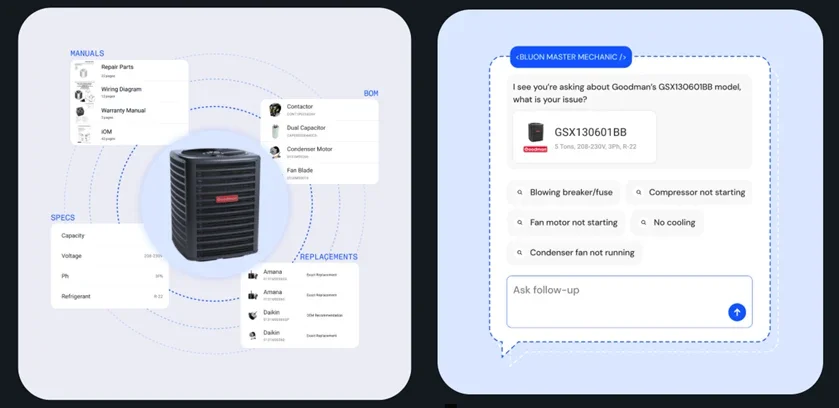
Image Source: Bluon
Bluon is a free app focused on tech support, refrigerant data, and part sourcing—making it a great companion tool for HVAC techs working solo or on smaller crews. It includes installation manuals, troubleshooting help, and a unique support hotline. While valuable, Bluon is not a full field service management platform, so you’ll need to pair it with another app for scheduling or invoicing.
How pricing works: Free to download and use, with optional marketplace integrations.
What sets it apart for independent contractors: Bluon delivers fast answers in the field, helping techs solve problems without making extra calls or digging through manuals.
6. Best for ease of use: Workiz
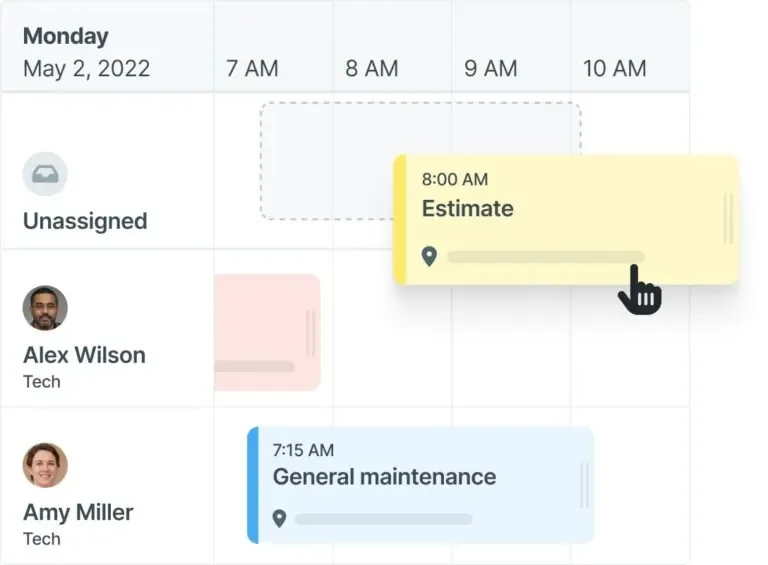
Image Source: Workiz
Workiz is designed with simplicity in mind—ideal for HVAC businesses that want to digitize without a steep learning curve. The iOS app supports scheduling, dispatching, payments, and even call tracking, all in one dashboard. However, it may lack deeper functionality in areas like complex reporting or advanced asset management.
How pricing works: Starts at $225/month per team, depending on features and user count.
What sets it apart for ease of use: Workiz focuses on clarity and fast setup, letting techs and admins jump into the system and get to work without delay.
7. Best for customer prioritization: Service Fusion
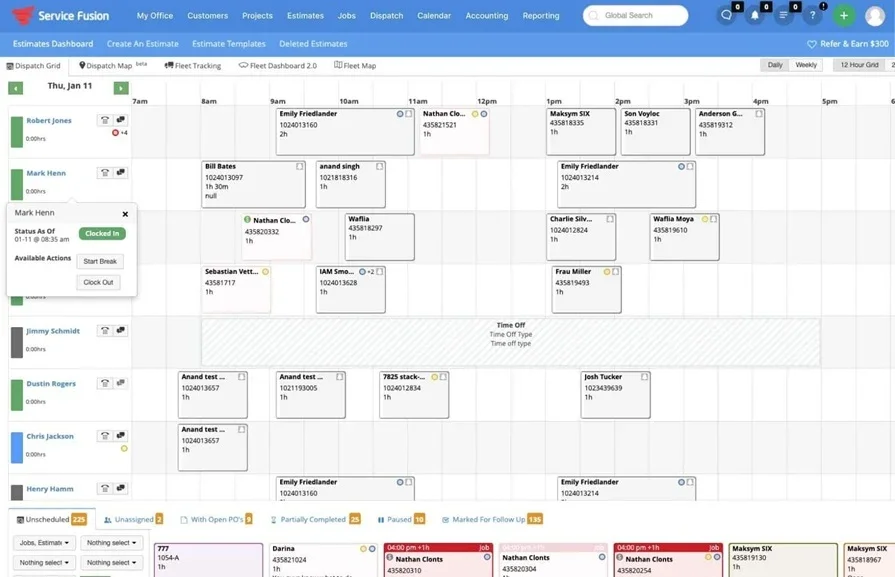
Image Source: Service Fusion
Service Fusion is tailored for HVAC companies that need to stay on top of large volumes of customer jobs. The app for iPad and iPhone includes client history, call tracking, and job status updates to help techs and office staff prioritize tasks more effectively. While the platform includes strong customer management tools, the mobile app can experience occasional lags with data syncing across devices in fast-paced environments.
How pricing works: Flat monthly fee starting at $225/month, with unlimited users included.
What sets it apart for customer prioritization: Its call tracking and customer database features give office staff and techs the context they need to respond faster and keep clients informed every step of the way.
8. Best for smart diagnostics and calculation: measureQuick
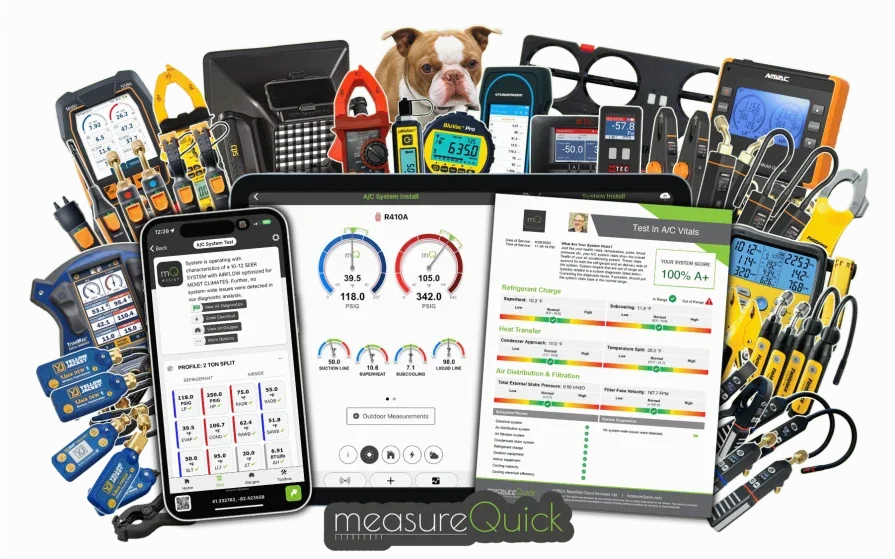
Image Source: MeasureQuick
measureQuick is a powerful diagnostics platform that turns iPhones and iPads into advanced HVAC analysis tools. It syncs with Bluetooth probes to measure system performance, generate real-time diagnostics, and create customer-ready reports. However, it does not offer full job management features like scheduling or invoicing, so it’s best used alongside a primary FSM app.
How pricing works: Free to download with in-app purchases or upgrades depending on the features used.
What sets it apart for smart diagnostics and calculation: It gives techs real-time performance data, helping them make accurate decisions and reduce repeat visits—directly from their iOS devices.
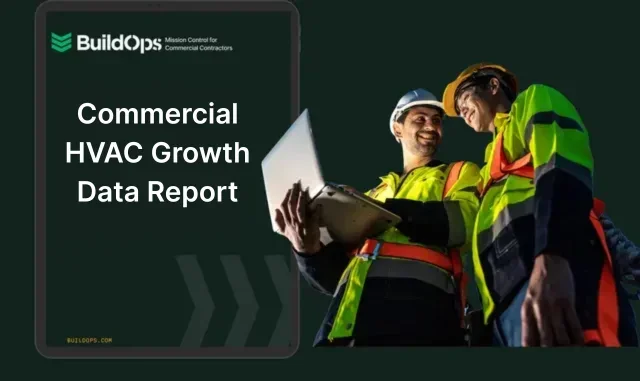
Get the HVAC growth report
See first-hand how leading HVAC pros book more jobs and grow their business.
7 benefits of using an HVAC app compatible with iPads & iPhones
An HVAC app for iPad or iPhone is more than a digital clipboard—it’s a way to connect your team, speed up your process, and stay in control from the field or the office. When your software works well across iOS devices, it gives you flexibility without sacrificing reliability. Below are seven key benefits that matter to HVAC contractors, field techs, and business owners—and how each one ties into real operational gains.
1. Better technician response time
HVAC techs need to move fast between jobs. Apps built for iOS load quickly, sync job info on the fly, and help crews get moving without phone calls or delays. Whether it’s pulling up service notes or getting real-time dispatch instructions, field teams are able to respond faster when working from iPads or iPhones. For Android users needing a comparable setup, this guide to HVAC apps for Android outlines mobile tools built for that environment.
2. Stronger office-to-field communication
When an HVAC business runs on a split system, breakdowns in communication slow everything down. iOS-based platforms reduce that gap by syncing schedules, notes, and customer updates instantly between techs and office staff. For teams managing coordination from desktop systems, HVAC software for Mac can serve as a natural complement—creating a seamless experience across both mobile and office devices.
3. Faster document access on-site
Contractors in the field often need to reference repair histories, equipment specs, or agreements while standing in front of the unit. HVAC apps on iPad allow teams to pull those files instantly—without flipping through folders or calling the office. If your crew handles contracts regularly, the commercial HVAC contract template can help standardize your documentation for mobile use.
4. Simplified billing from the field
Apps that support invoicing on iPhone or iPad eliminate the need for handwritten tickets or end-of-day paperwork. Techs can generate an invoice right after the job, attach photos, and send it before leaving the site. For crews still tightening up their billing workflows, this overview of HVAC billing apps shows what tools can support both field and office billing.
5. Improved dispatcher efficiency
When dispatchers can see tech status and update jobs in real time, they avoid double bookings and long idle windows. HVAC software on iPad gives dispatchers immediate access to location data and schedule changes—without waiting for a callback or refresh. For deeper insights into this role, the HVAC dispatcher guide explains how modern tools support smarter scheduling.
6. Shorter payment cycles
The faster you send the invoice, the sooner you get paid. Apps that let techs email or process payment from their iPhone cut billing delays by hours—or even days. This HVAC invoicing guide outlines how to move from paper to digital, speeding up the collection process across the board.
7. More flexibility for growing teams
Whether your techs use iPads in the field or you manage ops from a Mac in the office, iOS-compatible HVAC apps give your company room to grow. Teams can scale up without overhauling their tools, which means faster onboarding and fewer disruptions as you add more calls and more techs. Compatibility across Apple devices also means you can adapt the system to fit your team—not the other way around.
3 important FAQs about HVAC apps for iPad & iPhone
iOS-compatible HVAC apps bring power and precision to the field—but contractors often have questions about how they work, what they cost, and if they’re truly worth the investment. Below are three of the most common questions HVAC teams ask when looking at HVAC software for iPad and iPhone.
1. What is an HVAC app for iPad & iPhone?
HVAC apps compatible with iPads & iPhones allow contractors and technicians to manage field tasks such as scheduling, dispatching, quoting, invoicing, and customer communication directly from their Apple devices. These apps are designed to support real-time updates between the field and the office.
These apps let field techs handle everything from checking service histories to closing out work orders—all from a mobile device without returning to the shop. When built properly for iOS, they sync smoothly across iPads and iPhones, which is key for speed and accuracy in the field.
2. What are the licensing options for HVAC software for iPad & iPhone?
Licensing options vary depending on the provider, but most iOS-compatible HVAC software falls into one of the following categories:
- Per-user monthly licenses: You pay a monthly fee for each active user (technician, dispatcher, admin).
- Flat-rate team licenses: A single monthly or annual rate for unlimited users.
- Tiered feature-based plans: Price depends on which features you unlock, such as CRM, quotes, or reporting.
- Annual contracts with onboarding: Some providers bundle in training, setup, and support as part of long-term agreements.
- Free or freemium apps: Limited versions with basic functionality, with paid add-ons or upgrades available.
When selecting a license, make sure the plan supports mobile usage across iPads and iPhones, especially if your crew depends on on-the-go access.
3. Are HVAC apps for iPad & iPhone worth the cost?
Yes—if your team works from the field regularly, investing in HVAC software for iPad and iPhone pays off quickly. These apps help reduce paperwork, prevent missed calls, and speed up billing—saving time and cutting down on errors. The upfront cost of licensing is often recovered through faster job turnarounds and fewer delays in communication.
For teams juggling high-volume service calls or managing multiple techs, the boost in efficiency and visibility far outweighs the subscription fee. The ROI grows even more when techs use these apps to upsell services, collect payments on-site, and reduce callbacks due to missed info.
Finding an HVAC app that actually fits the way your techs work on iPads and iPhones is not easy. Many tools check some boxes—but few cover the full scope of what a fast-moving HVAC team needs in the field. Real-time dispatching, built-in quoting, fleet visibility, invoicing, mobile CRM access—these features are rarely all packed into one platform. That’s where BuildOps stands out. It brings every one of those capabilities together in a single iOS-compatible platform, built specifically for commercial field service work.
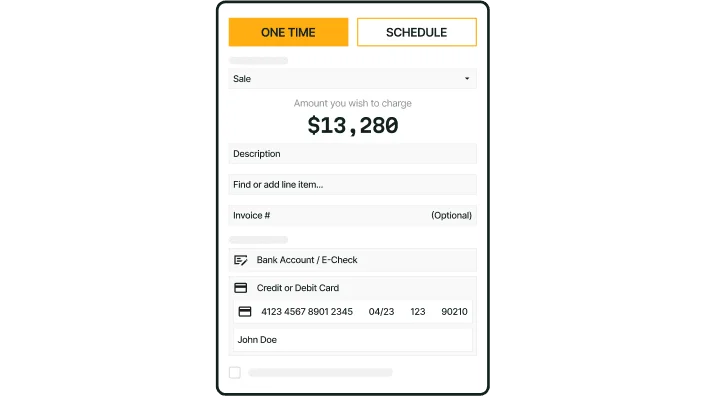
Take a closer look
See how BuildOps saves HVAC pros time and keeps jobs running on schedule.



